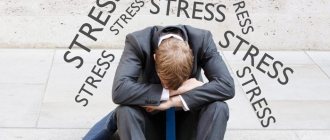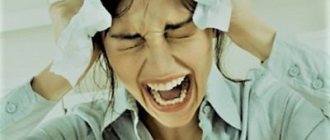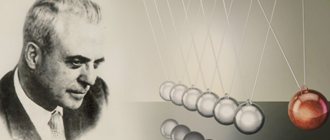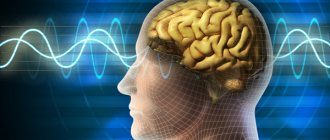For centuries, people have been trying to understand the relationship between a person’s physical appearance and his mental state. Either they believed that they had no contact with each other, or they called somatics a bridge between them. And there are also concepts for which phobias, dominant feelings, temperament, some mental disorders and other personality traits leave subtle imprints on a person’s appearance. And, if you see them and eliminate them, you can cope with many problems. Body-oriented therapy, or TOT for short, deals closely with this.
What it is
Body-oriented therapy is a direction in psychology and psychotherapy that eliminates problems and treats neuroses through various techniques of bodily contact.
The founder is Wilhelm Reich (mid-20th century) - an Austrian and American psychologist, Freud's only student. Stepping back from his teacher’s psychoanalysis and taking only a few points from it, he created his own concept of how to help people resolve difficult life situations and treat various types of mental disorders. To do this, in his opinion, it is necessary to influence in a certain way the weak “zone” of the human body that has suffered due to psychological trauma.
Over time, it turned out that working with such problem areas not only really brought calm and peace to the people coming to the session, but also significantly improved their physical well-being. Due to this, Reich gained many followers, and his therapy became widespread throughout the world.
Despite many grateful reviews, today it belongs to pseudoscientific industries, whose effectiveness has not been confirmed by research. The weakly defined theoretical evidence base that TOT actually works does not stand up to criticism either.
Relaxation transcamera
The Reich chamber is a device that can cure the patient from the causes of illness, and not from the symptoms. Reich argued that when diseases occur in the human body, the vibrations of a certain organ are disturbed. The camera brings a person’s internal vibrations into harmony.
Its positive effect on the human body has been clinically documented more than once and is beyond doubt.
Reich camera in action
But despite this, the relaxation transcamera has fallen into oblivion. The reason lies in the ruined reputation of the scientist. Do not forget that the doctor had many rivals who created medical devices and were interested in their successful sale.
What is she like?
The first machine Reich created was cumbersome. His followers assembled a lightweight copy of the camera. It was made of wood in the form of a rectangular box, where a person could easily fit.
How to make it yourself
The design of the camera is simple.
To create it you will need:
- wooden boards;
- iron filings;
- organic fiber (wool, hair, fur).
You need to make a box out of wood. The fiber is mixed with iron filings and secured to the walls of the box with sheets of plywood.
The operating principle of the chamber is as follows: orgone energy is formed in organic fiber and, reflected from sawdust, enters the surrounding space. Wilhelm Reich advised spending 15 to 30 minutes in the cell every day. This practice can prevent the occurrence of many diseases and strengthen the immune system.
Tags: Astral, Bioenergetics, Vegetotherapy, Wilhelm Reich, Denis Dementiev, Muscular armor, Orgone energy
About the author: Denis Dementyev
For me, esotericism is the key to the heart, spiritual practice. This is the desire to look behind the screen of the world and find there the abyss of the divine. Wake up. During your lifetime, step into the fire that opens the gates of immortality and find true freedom.
- Related Posts
- The meaning of red and pink colors in the human aura
- What does the 9th day after death mean for the deceased and his relatives?
- 24 practices for protecting, strengthening and restoring the aura and biofield
« Previous entry
Basics
Basic Concepts
Body-oriented therapy is based on a fundamental concept, without which this direction cannot be imagined. This is a bodily shell, although it has many other synonymous terms: muscular, muscular, characterological armor, muscle clamps, ego-defense. In total, the human body is divided into 7 problem areas, where it can form in accordance with the received psychological trauma.
According to Wilhelm Reich, the bodily shell is the body’s defenses, physically suppressing fears, internal anxiety, complexes and everything that poses a threat to the psyche.
Orgone energy is what Reich called libido, known to everyone according to Freud, which is released as a result of working with shells.
Unraveling is the name given to the process of releasing muscle tension in body-oriented therapy.
Shell formation diagram
Unlike all other areas, body therapy closely connects what is happening in a person’s soul with his appearance. According to her teaching, contact between them is established as follows:
1. Psychotrauma.
2. The specific situation associated with it is causing concern.
3. A person seeks to protect himself from this anxious state and a repetition of what happened.
4. He suppresses his fear with the help of “muscle clamps” in a certain part of the body.
5. This forms simultaneously:
- character or pattern of behavior;
- bodily shell.
An example of how this scheme works in practice:
1. At school, the child is constantly told that he is nothing.
2. He doesn’t want to go to school because of this.
3. Since this must be done day after day, he tries to avoid direct contact with the one who tells him this.
4. Does not look into the eyes, lowers his gaze, closes his eyes, wrinkles his forehead.
5. This forms:
- low self-esteem;
- body shell "Blocks in the eye segment."
Scheme of working with the shell
To help a person solve his problems, body psychotherapy works in parallel with both entities - external and internal:
- The type of bodily shell is revealed, and where exactly it is located.
- Gradually relieve tension from the problem area of the body using various techniques.
- Along the way, psychotrauma is revealed.
- Parallel work is underway with it.
- Orgone energy is released.
- Neurotic and other disorders are cured.
For a long time, within the framework of body-oriented psychotherapy, specialists worked only with muscle tension, believing that after their elimination, psychological trauma would automatically disappear. And only after a while it was concluded that it was necessary to remove both at the same time. This way you can ensure a lasting effect of the sessions and a guarantee that the problem will not return again.
Developments based on breathing and deep muscle relaxation
Jacobson's development concerns progressive muscle relaxation. The fact is that the relationship between proper rest of the body and its health has long been noticed. Insufficient relaxation of areas of the body leads to stagnation and poor functioning. Special exercises help, by tensing and relaxing muscles, to eliminate psychological problems.
Currently, the approach has received a second wind, since a number of proprietary techniques have been created in which progressive muscle relaxation helps cancer patients get rid of anxiety, increase the body's performance and achieve lasting remission.
Rebranding Leonardo Orr takes as a basis the technique of connected breathing, when there is no pause between inhalation and exhalation. The human body relaxes so much that it first restores negative suppressed experiences. And then he “releases” them. Thus eliminating depression, increasing activity, productivity and joy of life.
Baskakov's thanatotherapy works with the concept of death or thanatos not as the absence of existence, but as a way of deep relaxation. In this way, certain problems are removed: excessive control, which is projected in the head area; violation of contacts with the projection in the chest area, sexual problems (groin area), as well as stability problems (feet).
Methods
Based on the concept of Wilhelm Reich, various methods of body-oriented psychotherapy and approaches to the relationship between the body and psyche were created.
Basic methods of body-oriented therapy:
- bioenergy system therapy (bioenergy system therapy, BEST) E. I. Zueva: impact on the mind, feelings and body to treat the psyche;
- vegetative (somatic, bodily) therapy by W. Reich;
- movement practice of M. Feldenkrais, the goal of which is to teach a person to move correctly (like children) in order to relieve muscle tension;
- organismic psychotherapy by M. Brown: the shell is considered as a mismatch between the body and the brain;
- radix (source of vital energy) C. Kelly - a group version of body-oriented therapy;
- Rosen method M. Rosen: work with tense muscles in combination with verbal contact;
- Rolfing (structural integration) I. Rolf: work on improving gait, posture, sitting style, communication style, their relationship with behavioral patterns;
- somatic psychotherapy of biosynthesis by D. Boadella: work with 3 life streams - endoderm, mesoderm and ectoderm;
- body-oriented bioenergetic psychoanalysis (bioenergetics) by A. Lowen;
- Hakomi (body-centered psychotherapy) by R. Kurtz: the main methods are dance-movement therapy, yoga, meditation.
Partially based on body-oriented therapy are methods such as:
- Core-energy D. Pierrakos;
- biodynamics G. Boysen;
- insight therapy (bodily insight) by M. Belokurova;
- primary therapy by A. Yanov;
- process-oriented psychotherapy by A. Mindella;
- psychology of somatic development (bodynamics, bodynamic analysis) L. Marcher;
- thanatotherapy (death treatment) V. Baskakov;
- sensual (sensory) awareness Sh. Selver.
And these are not all methods. Their abundance proves the popularity of this trend.
Seven segments of the muscular carapace
When negative emotions are suppressed, muscle tension occurs in the human body. If the problem is not solved and the suppression continues for a long time, then there are a lot of clamps. The human body turns into a cell. But people begin to respond to problems only when muscle tension leads to the development of diseases: deformation of posture, the appearance of a hernia or tumor.
To be cured, the patient needs to gradually dissolve the seven segments of the muscle carapace. Reich called this process psychological growth.
The muscle carapace consists of segments including:
- Eyes and forehead. Tightness of these muscles is characterized by vision problems. They arise when a person suppresses fear, not wanting to see what is around him.
- Jaws, chin, back of head. The suppressed emotion is anger or sexual arousal. Occurs when screaming or crying is suppressed.
- Neck, tongue. Suppressed anger means that a person was not allowed to express himself or speak out.
- Chest, shoulders, arms. Clamping occurs when all basic emotions are held back.
- Diaphragm. Strong anger is retained.
- Back and stomach. Fear and anger are suppressed.
- Legs, hips, pelvis. Sexual arousal is suppressed.
Visual representation of muscle carapace segments
Removing the clamps should start from the eyes and work down to the pelvis. At the same time, the patient’s body will be filled with vital energy, which Reich called orgone.
Types of bodily shell
Despite such a huge number of techniques, almost all of them rely in their theoretical basis on those types of bodily armor that Wilhelm Reich once identified.
Ophthalmic
What's included: eyes, eyebrows, forehead, scalp.
External signs of the shell:
- feeling of a motionless mask on the face;
- shifting gaze;
- the person never makes eye contact;
- deep vertical wrinkles on the bridge of the nose and multiple wrinkles on the forehead.
Internal problems: social fears, inability to establish interpersonal contacts.
Somatics: vision problems, headaches, tearfulness.
Oral/maxillary
What's included: back of the head, chin, throat.
External signs:
- tense jaw;
- grimacing;
- habit of always chewing gum;
- “shaking nodules”;
- reticence.
Internal problems: secrecy, the need to keep everything to yourself, restrain anger.
Somatics: usually no complaints.
Throat/cervical
What's included: tongue, neck.
External signs:
- neurotic cough;
- quiet voice;
- frequent swallowing.
Internal problems: the same as with a jaw clamp, but deeper, going back to childhood (for example, resentment towards parents).
Somatics: frequent sore throats, constant lump in the throat.
Chest
What's included: chest, shoulders, shoulder blades, arms.
External signs:
- labored breathing;
- incorrect posture;
- unnatural position of the shoulders (lowered, raised, asymmetrical);
- lack of body flexibility.
This is interesting! According to body-oriented therapy, anyone can check their acquaintances for the presence of a chest shell and thereby determine whether they are happy or not. To do this, just call out to him when the person’s back is to you. If he turns his whole body, the clamp and problems are obvious. If he turns only his head or only the upper part of his body, he is fine.
Internal problems: suppression of basic human feelings - love, dreams, jealousy, hobbies. In socially oriented therapy, the chest shell is evidence that the patient is deeply unhappy.
Somatics: shoulder pain, shortness of breath, hyperhidrosis of the palms.
Diaphragmatic
What is included: diaphragm, solar plexus, lower vertebrae.
External signs:
- scoliosis;
- difficulty in exhaling.
Internal problems: prohibition on expressing feelings of disgust and disgust. Often this type of shell is observed in those who are forced to live, work or simply communicate with an unloved and even disgusting person.
Somatics: frequent vomiting, pulmonary diseases.
Abdominal
What's included: belly, back.
External signs: protruding, large belly.
Internal problems: fear of attack, anger, hostility.
Somatics: obesity, digestive problems.
Pelvic
What's included: pelvis, lower limbs.
External signs:
- the pelvis protrudes backward;
- tense buttocks;
- half-bent gait.
Internal problems: inability to satisfy arousal, suppression of sexual pleasure, feeling of threat to life.
Somatics: weak, wobbly legs, trembling knees.
Who is body-oriented therapy recommended for?
- Those who have lost contact with their own body experience constant tension and soreness throughout the body.
- Those who suffer from panic attacks, post-traumatic stress disorder, or experience grief from the loss of a loved one.
- Those who experience difficulties in the emotional sphere (containing or expressing emotions).
- For those who experience anxiety, various kinds of fears and phobias.
- Those who are in a state of chronic stress, have lost their zest for life, and are in a state of professional burnout.
- For those who want to understand themselves, the reasons for their internal attitudes and psychological traumas.
- Those who experience systematic sleep disturbances have bad habits.
- For those who want to get rid of internal constraint that interferes with their career, communication and building relationships with others.
Also, bodily therapy is widely used for the development and realization of personal potential: increasing self-esteem, increasing one’s internal capabilities, replenishing physical, emotional, mental and spiritual energy, and much more.
Technicians
Working with a patient, a body therapist uses various techniques to relieve muscle tension. And some of them are familiar to everyone:
- various types of massage;
- manual therapy;
- breathing exercises;
- yoga;
- regular sets of exercises from sports programs;
- dancing;
- gymnastics for the face;
- acting skills.
In body-oriented therapy, areas of art therapy are often used. In particular, dance and drama. There are also entire sets of movement exercises developed specifically for TOT, for example, by Frederick Matthias Alexander and R. Laban.
To work with psychotrauma, conventional techniques and techniques are used, typical of all areas of psychotherapy: conversation, group trainings, affirmations, hypnosis.
On practice
Body-oriented therapy is used to treat various personality and behavioral disorders and to eliminate psychological problems. In particular - neuroses, stress, post-traumatic disorders, depressive states, psychosomatic diseases. Let's give a few examples of how this works in practice.
For children
Body-oriented therapy is useful for children who have already encountered stress in their lives, are characterized by increased anxiety, autism, shyness, and cannot control their emotions and actions. TOT allows them to normalize their mental state, helps them calm down, get rid of emotional excitement and psychological trauma, increase their level of awareness, and survive negative life experiences.
Despite the simplicity of many exercises, specialists should work with children.
There are several universal exercises that will help relieve your child of muscle tension throughout the body.
- "Doll Soldier"
Task No. 1 is to stand up straight, tensing all parts of the body, pretending to be a soldier. Stand without moving for several minutes (depending on the age of the child). Task No. 2 is to sharply relax the body and become a rag doll without bones for a while. These positions need to be changed 2-3 times. Perform 2-3 times a day.
- "Seed"
The child curls up in a low squat and pretends to be a seed planted in the ground. The specialist pretends to water it, dig it in, care for it, and look after it. From time to time, an adult notes that the plant has grown, it has leaves, a bud, a flower. According to his story, the child slowly straightens his body.
When working with children, TOT also uses fairy tale therapy, breathing exercises, role-playing games, and group trainings.
For women
Body-oriented therapy is simply necessary for women because, in addition to mental and physical health, it provides beauty and youth to the body. Now many TOT centers are opening special courses for this. Work is carried out with all segments, regardless of whether there is a shell there or not:
- ophthalmic – cleansing the eyes and eliminating wrinkles on the face;
- oral - the ability to control your speech organs so as not to talk idle talk;
- throat/neck – the ability to express one’s emotions through singing;
- chest - development of straight posture, improvement of heart function;
- diaphragmatic - mastering breathing exercises;
- abdominal - cleansing of the gastrointestinal tract, correction of the waist and sides;
- pelvic – working with maternal instincts, reproductive functions, and one’s own orgone energy.
Body psychotherapists promise to turn any woman with the deepest complexes into a real queen in just 10 sessions (each lasts about 2 hours).











